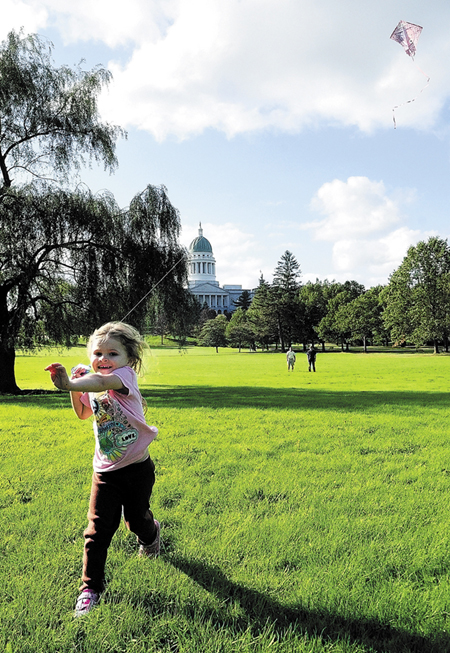AUGUSTA — When Rep. Craig Hickman stands on the third-floor balcony at the State House and looks out at Capitol Park, he sees potential.
More specifically, he sees the potential to grow blueberries, sage, oregano, sweet potatoes, okra and collard greens. He envisions colorful and edible additions to the historic state land once used as a campsite during the Civil War.
“I want people to see food when they come to the State House,” he said. “I want them to see agriculture. People don’t always think of edible plants as landscaping.”
Hickman, a Winthrop legislator, farmer and bed-and-breakfast owner, is sponsoring L.D. 474, “An Act to Require Edible Landscaping in a Portion of Capitol Park.” Co-sponsors on the bill include Rep. Matt Pouliot, R-Augusta, and Rep. Karen Kusiak, D-Fairfield.
The bill is headed to the State and Local Government Committee, which will hold a hearing on the idea in the coming weeks.
Hickman is seeking to change the look of a carefully planned park that mixes passive and active recreational uses, said State Historian Earle Shettleworth. Shettleworth, who serves as chairman of the Capitol Planning Commission, said he had not spoken to Hickman about his ideas, but that berry bushes and apple trees probably would conform with the current plan for the park.
Capitol Park — described in a legislative handbook as “the earliest-known consciously-designed public ground in Maine” — dates to 1827, which is the year in which the Legislature established Augusta as the state capital. Lawmakers in that year set aside $500 to pay for improvements to the park, including “forest trees.”
Then in 1920, the state hired Frederick Law Olmsted’s firm to plan the landscaping for the park, the State House grounds and the Blaine House. In more recent times, the plan has been updated, and the Legislative Council has provided money to pay for new trees, improved walkways and better benches, said David Boulter, executive director of the Legislative Council.
The council consists of leaders in both major parties and is responsible for paying for park maintenance and monitoring uses of the land, which in recent years have included a long-term encampment by Occupy Maine protesters. Boulter said any changes to the landscaping will need to be consistent with the Olmsted plan, which typically calls for trees and plants that are “muted in terms of colors,” he said.
Another consideration is upkeep.
“Maintenance is an issue,” he said. “It’s a very large park. We don’t have gardeners on site.”
Shettleworth said it’s important to keep the park available for multiple uses.
“One of the basic precepts is you have active space and you have passive space,” he said.
Hickman said anything he proposes would require little work but would showcase the beauty of food-producing plants year-round. His bill calls for the edible landscaping to be added as money is available, and that public and private funds may be used to cover the cost.
He even has some seeds from his farm he’s willing to donate to get the project started. The food produced at the park could be sold in the Cross State Office Building cafeteria or consumed at the Blaine House, he said.
“Whoever designs it, I want it to look seamless and beautiful,” he said. “You can just let the plants live through their full life cycle, and you see how beautiful they are.”
Susan Cover — 621-5643
scover@mainetoday.com
Send questions/comments to the editors.



